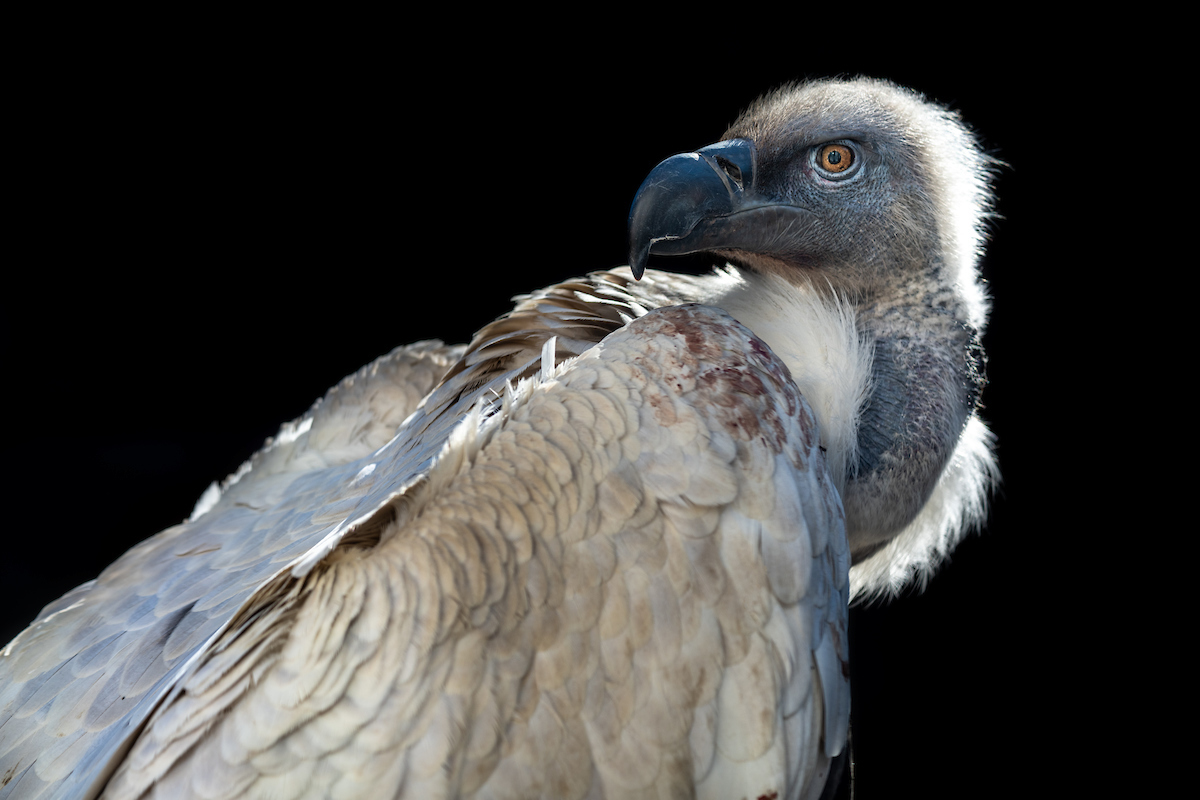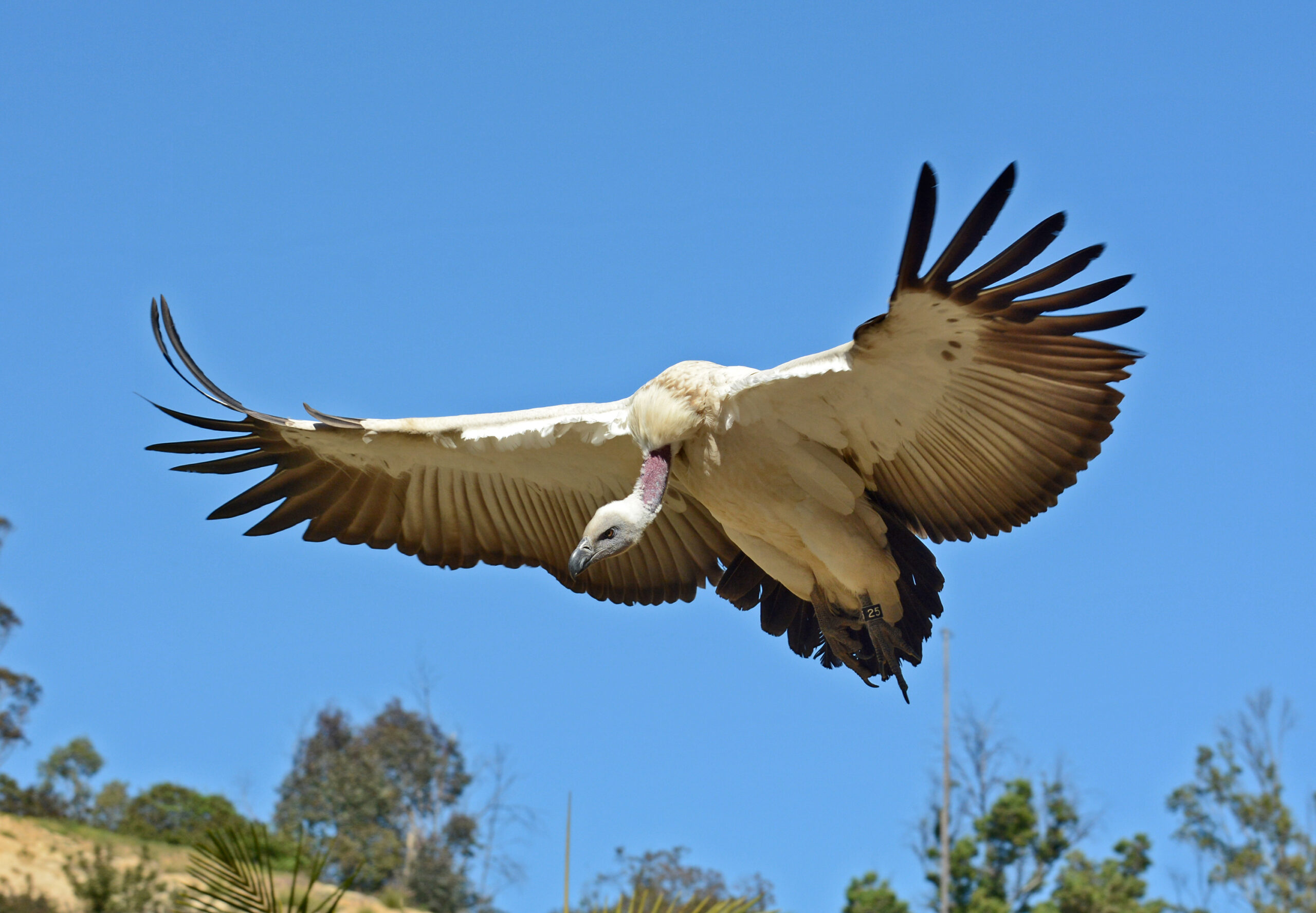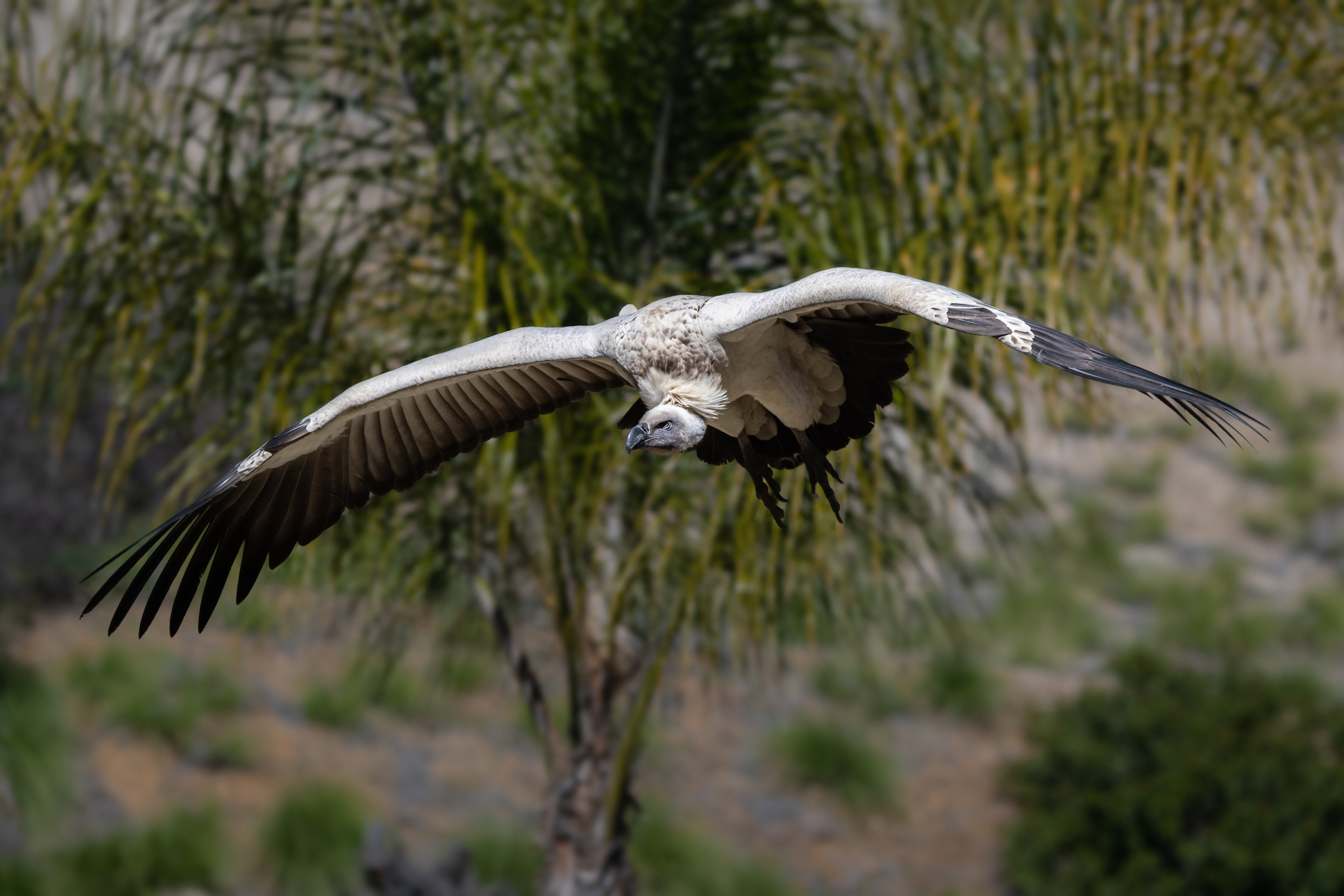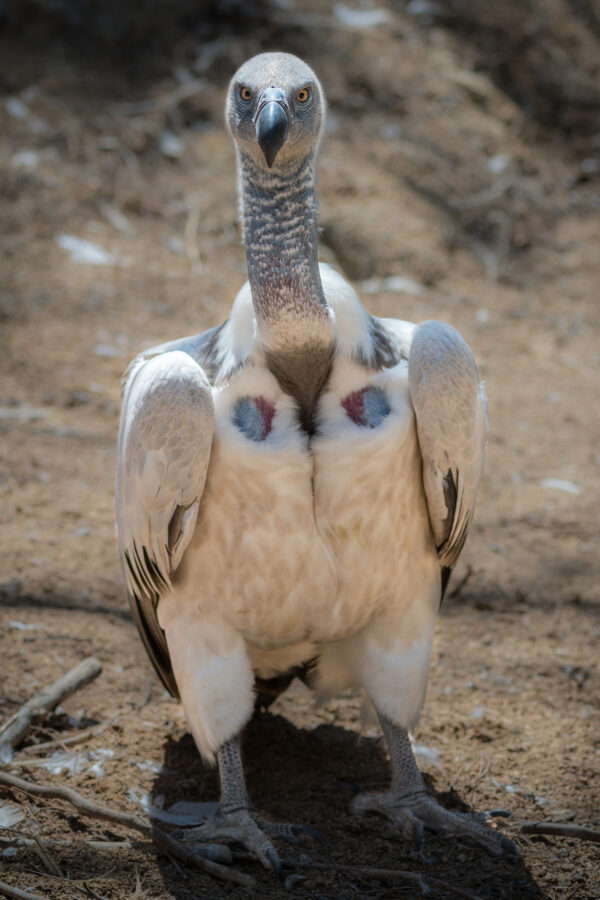About
Cape vultures are carrion feeders. By swooping in to remove dead animal remains, they act as nature’s “clean-up crew,” disposing of large carcasses that could carry diseases like rabies, botulism, or anthrax. They can digest meat in any stage of decay, and strong immune systems allow them to safely eat dangerous pathogens that would kill other animals.
Cape vultures can locate a meal from miles away using their excellent eyesight. When they spot a carcass, they land several yards away and move toward it with wings spread and neck outstretched. Competition is always fierce. Sometimes, a Cape vulture eats so much at a time that it’s hard to fly away afterwards.
Bathing is important to Cape vultures; they like to be clean after a messy meal! The bare skin of their heads and necks allows them to easily rinse off. Then, they remain in the sun with open wings to dry themselves.
Cape vultures’ large, broad wings are designed for soaring on rising currents of warm air. They can soar for hours, often as high as 10,000 feet, without ever flapping a wing.
The only vultures in southern Africa that live together in large colonies, Cape vultures roost in layered rock ledges and cliffs. These “vulture apartment blocks” can be visible from many miles away due to extensive fecal “white-washing.” Breeding occurs in the fall, with displays consisting mainly of mutual soaring near the nest site. A single egg is laid, which both parents incubate for about 57 days. Hatching can take up to two days. Both parents feed the chick a diet of soft meat and bone fragments by direct regurgitation.
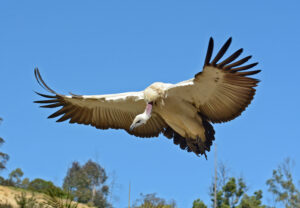
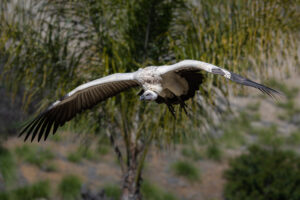
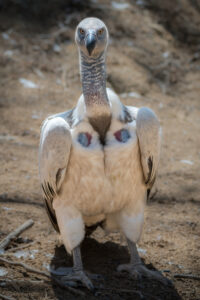
HABITAT
Formerly widespread throughout southern Africa, Cape vultures now have one of the smallest distributions of any Old World vulture. They nest in mountainous areas.
DIET
Cape vultures primarily eat soft tissue. Any skin, hair, sinew, or grass ingested accidentally is formed into a pellet and regurgitated.
PHYSICAL CHARACTERISTICS
The Cape vulture is a large bird with a wingspan of up to eight and a half feet. It stands at about three feet tall and weighs 15 to 24 pounds. This scavenger has a sharp, hooked beak designed to tear flesh and large feet to hold down carcasses while eating. Its primarily white feathers have taupe tips at the wing and tail, and its fleshy head is a complementary grey. As an Old World vulture, the Cape is more closely related to eagles and hawks than to New World vultures like condors, which are in a separate order.
LOCATION WITHIN THE ZOO
You may view Cape vultures in Cape Vulture Plaza in the Zoo’s Africa section (see Zoo Map). This species also appears in the World of Birds Show.

